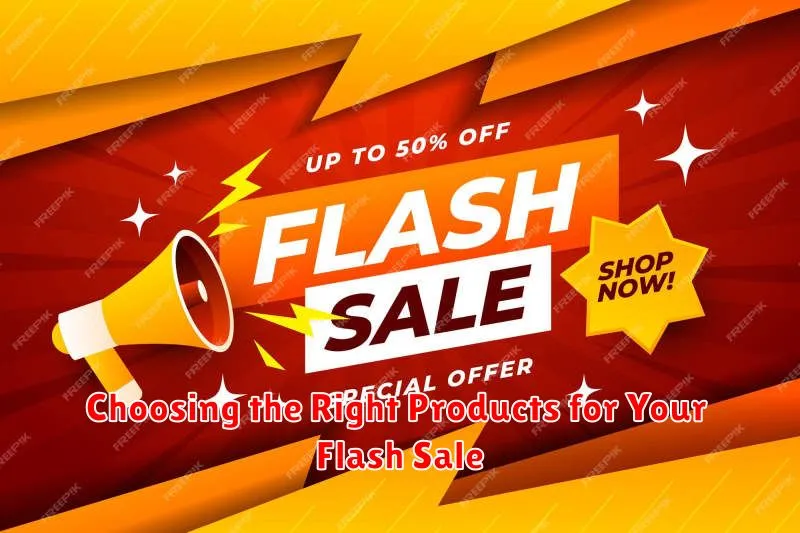In today’s dynamic e-commerce landscape, flash sales have emerged as a powerful tool for driving revenue and boosting brand visibility. They offer a unique opportunity to create a sense of urgency, entice customers with limited-time offers, and clear out inventory quickly. This article delves into the art of mastering flash sales in the e-commerce arena, providing you with the knowledge and strategies necessary to ignite your sales and achieve remarkable results. Learn how to strategically plan, execute, and optimize your flash sale campaigns to maximize their impact and cultivate lasting customer engagement.
From defining your target audience and selecting the perfect products to crafting compelling marketing messages and leveraging social media, this guide will equip you with the essential components of a successful flash sale strategy. We’ll explore best practices for creating a seamless customer experience, managing inventory effectively, and analyzing your results to refine future campaigns. Whether you’re a seasoned e-commerce entrepreneur or just starting out, understanding the nuances of flash sales is crucial for achieving sustainable growth in the competitive online marketplace. Prepare to ignite your sales and unlock the full potential of this dynamic e-commerce tactic.
What is a Flash Sale and Why Should You Consider It?
A flash sale is a short-term, promotional event where businesses offer significant discounts on a select range of products or services for a limited time. These sales are characterized by their urgency, creating a sense of excitement and encouraging immediate purchases. Flash sales typically last anywhere from a few hours to a couple of days, driving a rapid surge in sales.
Why incorporate flash sales into your e-commerce strategy? They offer several compelling benefits. Flash sales are exceptionally effective at boosting sales quickly. They also help reduce excess inventory, particularly seasonal or slow-moving items. Furthermore, flash sales can attract new customers and re-engage existing ones, driving traffic to your website and increasing brand awareness.
The time-sensitive nature of a flash sale creates a powerful fear of missing out (FOMO) among consumers, prompting them to act fast. This can translate to a significant increase in conversions and revenue. Flash sales also generate buzz and excitement around your brand, further contributing to increased visibility and customer engagement.
Planning Your Flash Sale: Setting Objectives and Target Audience
A successful flash sale requires careful planning. Begin by defining clear objectives. Are you aiming to clear out excess inventory, attract new customers, or boost sales during a slow period? A well-defined objective will guide your decisions throughout the process.
Next, identify your target audience. Understanding your ideal customer’s demographics, preferences, and buying behaviors is crucial. Ask yourself: Who is most likely to be interested in the products you plan to offer? What platforms do they frequent? Tailoring your sale to a specific audience will maximize its impact.
Consider creating buyer personas to represent your ideal customer. This will help you visualize their needs and motivations, making it easier to select products and craft compelling marketing messages. Understanding your target audience will inform your product selection, pricing strategy, and marketing efforts.
Creating a Sense of Urgency and Excitement
A key element of successful flash sales lies in crafting a palpable sense of urgency and excitement. This encourages immediate action, driving conversions and maximizing the impact of your limited-time offer.
Countdown Timers: Visibly displaying a countdown timer creates a powerful psychological trigger. Customers see the seconds ticking away, reminding them of the limited window of opportunity. This visual cue reinforces the scarcity of the deal and encourages quick purchases.
Limited Quantities: Emphasize the limited availability of products. Phrases like “while supplies last” or “only 100 available” add to the sense of urgency. Knowing the desired item is scarce motivates customers to act fast to avoid missing out.
Exclusive Pre-Sale Access: Offer early access to your loyal customer base. This generates buzz and makes your subscribers feel valued, rewarding their loyalty and building excitement for the upcoming sale.
Compelling Language: Utilize persuasive language that highlights the limited-time nature of the offer. Words like “flash sale,” “limited-time offer,” and “don’t miss out” effectively communicate the urgency of the sale.
Choosing the Right Products for Your Flash Sale

Selecting the right products is crucial for a successful flash sale. Strategic product selection can maximize impact and drive conversions. Consider these key factors when choosing which items to feature:
Product Popularity and Demand
High-demand products often create a buzz and attract customers quickly. Analyze your sales data to identify trending items or products with consistent high demand. Offering these popular choices in a flash sale can create a sense of excitement and encourage immediate purchases.
Inventory Levels
Sufficient inventory is essential to avoid disappointing customers and maximizing sales potential. Choose products with enough stock to meet the anticipated demand during the flash sale period. Running out of stock too quickly can negatively impact customer satisfaction.
Profit Margins
While deep discounts are a hallmark of flash sales, ensure your chosen products still allow for acceptable profit margins after the discount. Calculate your potential profits considering the discounted price and anticipated sales volume. Striking the right balance between attracting customers and maintaining profitability is crucial.
Setting the Price and Discount Strategy
A compelling discount is the cornerstone of a successful flash sale. Carefully consider your profit margins while creating an offer enticing enough to drive sales. Striking the right balance is crucial. Too small a discount won’t create excitement, while too large a discount could erode profits.
Analyze your product costs, including production, shipping, and marketing expenses. Factor these into your pricing calculations to ensure profitability even with the discounted price. Consider tiered discounts to incentivize larger purchases. For instance, offer a larger percentage off for customers who buy multiple items or spend a certain amount.
Clearly communicate the original price and the discounted price to highlight the value proposition for your customers. Displaying the percentage discount prominently can further enhance the appeal of the offer. Evaluate different discount structures such as percentage discounts, fixed-price reductions, or bundle deals to determine the most effective strategy for your target audience and product category.
Promoting Your Flash Sale Effectively

Effective promotion is crucial for a successful flash sale. Visibility is key to driving traffic and generating excitement. Utilize a multi-channel approach to reach your target audience.
Email marketing remains a powerful tool. Segment your list and send targeted emails announcing the sale with compelling subject lines and clear calls to action. Social media platforms are essential for creating buzz. Run targeted ads and engage with your followers through interactive posts and contests leading up to the sale.
Consider using influencer marketing to broaden your reach. Partner with relevant influencers to promote your flash sale to their engaged audience. Don’t forget about on-site promotions. Utilize pop-up banners and countdown timers to create a sense of urgency and highlight the limited-time nature of the deals.
Managing Inventory and Logistics
Effective inventory management is crucial for a successful flash sale. Accurately forecasting demand helps prevent stockouts and minimizes leftover inventory. Analyze past sales data and current market trends to estimate the appropriate stock levels for your flash sale items.
Reserve a dedicated portion of your inventory specifically for the flash sale to avoid disrupting regular sales operations. This prevents accidentally selling discounted flash sale items at full price after the sale ends.
Streamlined logistics are essential for timely order fulfillment. Ensure your warehouse team is prepared for the increased order volume. Communicate clearly about the flash sale timeframe and anticipated shipping demands. Partnering with a 3PL (third-party logistics provider) can offer scalability and flexibility if needed.
Pre-pack popular items if possible to expedite shipping during the flash sale. This preparation helps prevent delays and ensures customer satisfaction.
Analyzing the Results of Your Flash Sale and Making Improvements
After the excitement of your flash sale subsides, the crucial task of analysis begins. Data analysis is key to understanding the effectiveness of your strategy and identifying areas for improvement.
Start by examining your key performance indicators (KPIs). Track metrics such as revenue generated, conversion rates, average order value, and website traffic. Compare these results to your pre-sale benchmarks and goals to gauge success.
Customer acquisition cost (CAC) is another important factor to consider. Evaluate how much you spent on marketing and advertising in relation to the number of new customers acquired during the flash sale. A high CAC might indicate the need to refine your targeting or explore more cost-effective promotional channels.
Finally, gather customer feedback. Surveys, reviews, and social media comments can provide valuable insights into customer satisfaction and identify areas where the customer experience could be enhanced. This information is invaluable for optimizing future flash sales and building stronger customer relationships.

